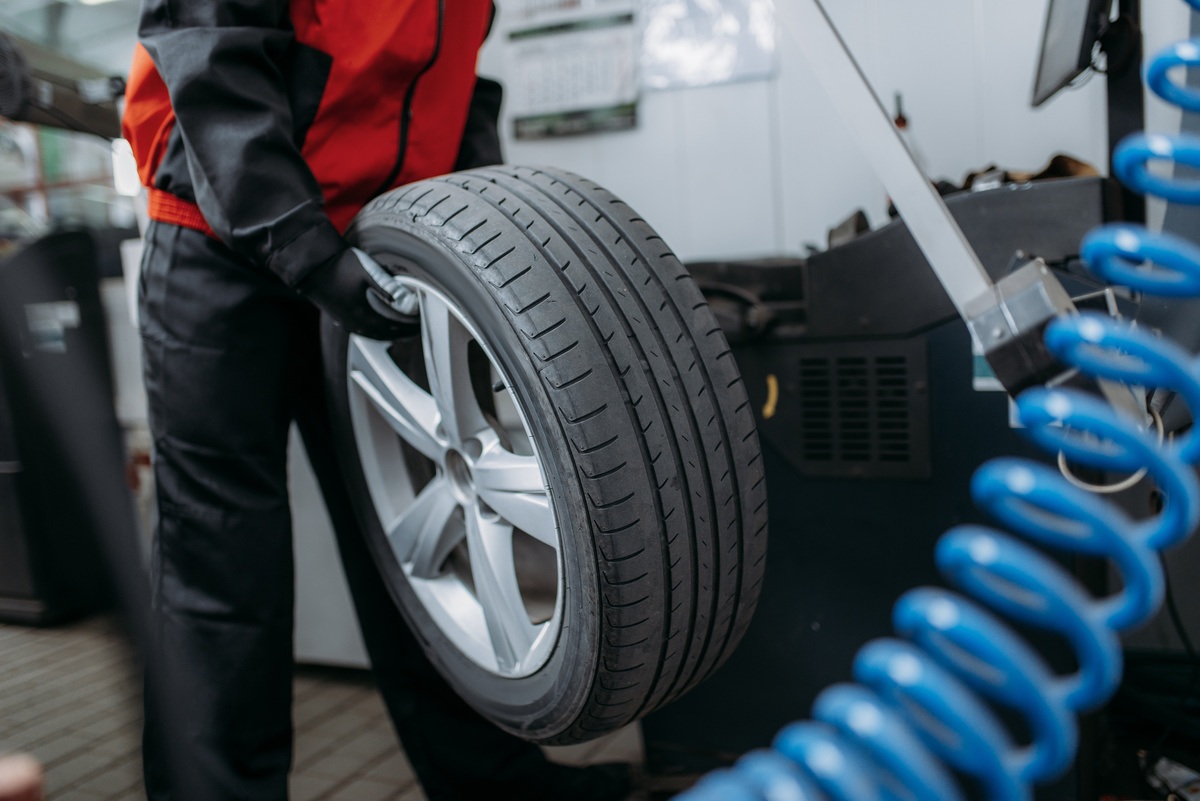
When it comes to vehicle maintenance, tire balancing plays a crucial role in ensuring smooth and efficient driving. Wheel balancing weights, often referred to as wheel weights, are essential components in achieving proper tire balance. These small yet powerful tools help distribute the weight of the tire evenly around the wheel, which in turn, promotes smoother rides, reduces wear on tires, and ensures better overall vehicle performance. In this blog post, we’ll explore the benefits of tire balancing weights and guide you on how to choose the right one for your vehicle.
What Are Tire Balancing Weights?
Tire balancing weights are small metal or lead-based components that are attached to a wheel during the process of balancing tires. These weights counteract any imbalances caused by the uneven distribution of weight within the tire or wheel assembly. Properly balanced tires ensure that the weight is evenly distributed around the wheel, which can improve the handling and performance of your vehicle.
Tire balancing is usually done at an auto repair shop when you have new tires installed or when you notice issues such as vibration or uneven tire wear. The balancing weights are placed on the rim of the wheel, either on the inside or outside, depending on the type of wheel and the weight distribution required.
Benefits of Tire Balancing Weights
- Improved Vehicle Handling
One of the most significant benefits of tire balancing weights is improved vehicle handling. An unbalanced tire can cause uneven wear on your tires and affect the alignment of the vehicle, making it harder to steer. When your tires are properly balanced, your vehicle handles better, and you’ll experience smoother turns and more responsive steering. This is particularly important for high-performance or luxury vehicles, where precise handling is essential.
- Extended Tire Life
Properly balanced tires experience even wear, which helps extend their lifespan. Unbalanced tires tend to wear unevenly, leading to premature tire replacement. The result is more frequent trips to the tire shop and higher overall maintenance costs. With the right tire balancing weights, you can reduce wear and tear, saving money in the long run by extending the life of your tires.
- Reduced Vibration
If you’ve ever driven a vehicle with unbalanced tires, you’ve likely experienced vibrations, especially at higher speeds. These vibrations can be uncomfortable and are a sign that the weight distribution of the tires is off. By using tire balancing weights, the vibrations can be significantly reduced, leading to a smoother ride. This not only improves comfort but also reduces strain on other parts of your vehicle, such as the suspension system.
- Enhanced Fuel Efficiency
When tires are not balanced, it can lead to increased rolling resistance, which in turn requires more energy (fuel) to maintain the same speed. By balancing your tires properly, you can reduce rolling resistance, which improves your vehicle’s fuel efficiency. This is particularly beneficial for those looking to maximize fuel economy or for fleet operators aiming to reduce operating costs.
- Safer Driving
Unbalanced tires can create problems with your vehicle’s alignment and suspension, which can ultimately affect braking and handling. Proper tire balancing ensures that your tires perform optimally, which is essential for safe driving. By maintaining your tires’ balance, you can avoid dangerous situations such as unexpected skidding or tire blowouts, particularly during high-speed driving or when road conditions are less than ideal.
- Lower Maintenance Costs
When tires are properly balanced, other components of your vehicle, such as the suspension and steering systems, are subjected to less strain. This leads to fewer repairs and replacements of these parts, ultimately saving you money on maintenance costs. Proper tire balance ensures that all vehicle systems function more efficiently, reducing the wear on critical components and extending their lifespan.
How to Choose the Right Tire Balancing Weights for Your Vehicle
Choosing the right tire balancing weights for your vehicle is essential to ensure optimal performance and durability. There are a few factors to consider when selecting balancing weights:
- Weight of the Vehicle
The weight of your vehicle determines the amount of weight required for proper tire balancing. Lighter vehicles may only require small amounts of weight, while heavier vehicles such as trucks or SUVs may require larger balancing weights to achieve proper alignment. Always check your vehicle’s specifications or consult a professional to ensure you’re selecting the right weight.
- Type of Tires
The type of tires on your vehicle also affects the type of balancing weight you should use. For instance, if you have high-performance or low-profile tires, you may need different types of weights compared to regular tires. Always consider the specific requirements of your tire type when choosing balancing weights.
- Type of Wheel
There are two primary types of wheel weights: clip-on and adhesive weights. Clip-on weights are designed to attach to the rim of the wheel, while adhesive weights stick to the inside of the rim. Depending on the type of wheel you have (steel or alloy), you will need to choose the appropriate type of weight. Alloy wheels, for instance, may require adhesive weights to avoid visible marks or damage to the wheel’s finish.
- Material of the Balancing Weights
Tire balancing weights are typically made from lead, steel, or zinc. Lead weights were once the most common option, but due to environmental concerns, many manufacturers now use zinc or steel. Zinc weights are considered more environmentally friendly and are just as effective as lead. Steel weights are durable but may require more weight than zinc for the same balance.
- Precision and Accuracy
To ensure optimal tire performance, the balancing weights should be precise and accurate. Poorly installed or inaccurate weights can cause uneven distribution and lead to the issues mentioned earlier, such as vibrations and uneven tire wear. When choosing tire balancing weights, make sure that they meet the highest standards for precision and are compatible with your vehicle’s specifications.
- Professional Assistance
While it is possible to balance tires on your own using a tire balancing kit, professional assistance is often recommended for the best results. Professional technicians use specialized equipment to ensure that tire balancing weights are placed correctly, ensuring the best performance and longevity of your tires.
Conclusion
Tire balancing weights are a crucial component of vehicle maintenance that plays a significant role in enhancing driving performance, extending tire life, and improving fuel efficiency. Properly balanced tires ensure a smoother ride, greater safety, and less wear on other vehicle components, ultimately saving you money in the long run.
When choosing tire balancing weights, it is important to consider factors such as the weight of the vehicle, the type of tires, and the type of wheels. Professional installation ensures that the weights are applied accurately, helping you avoid potential issues with uneven tire wear or vibrations.
By investing in the right tire balancing weights and taking care of your tires, you can enjoy a safer, more efficient driving experience. Regular maintenance and tire balancing are key to optimizing your vehicle’s performance and longevity.
